The SCHIRN is dedicating a large thematic exhibition to the eventful history of plastic in visual art for the first time. The exhibition makes clear how plastic as a
successful, multifaceted material has gone in its brief history from being an embodiment of progress, modernity, a utopian spirit, and a democratization of consumption to being a threat to the environment.
Plastic is everywhere. It permeates the present, is cheap, is available nearly all over the world, and is omnipresent in everyday life. Whether hard or flexible, transparent, opaque, patterned, smooth, delicate, or colorful, today it can be used to produce nearly anything. Synthetic substances had their major breakthrough in the 1950s and became both a symptom and symbol of mass culture—the “plastic age” was born. And plastics also found their way into art early on due to their enormous design possibilities, quickly becoming a central material and a vehicle of innovation.
PLASTIC WORLD brings together around 100 works by over fifty artists who work with plastic in diverse ways, including Monira Al Qadiri, Archigram, Arman, César, Christo, Haus-Rucker-Co, Eva Hesse, Hans Hollein, Craig Kauffman, Kiki Kogelnik, Gino Marotta, James Rosenquist, Pascale Marthine Tayou, and Pınar Yoldaş. The exhibition makes clear how plastic as a successful, multifaceted material has gone in its brief history from being an embodiment of progress, modernity, a utopian spirit, and a democratization of consumption to being a threat to the environment.
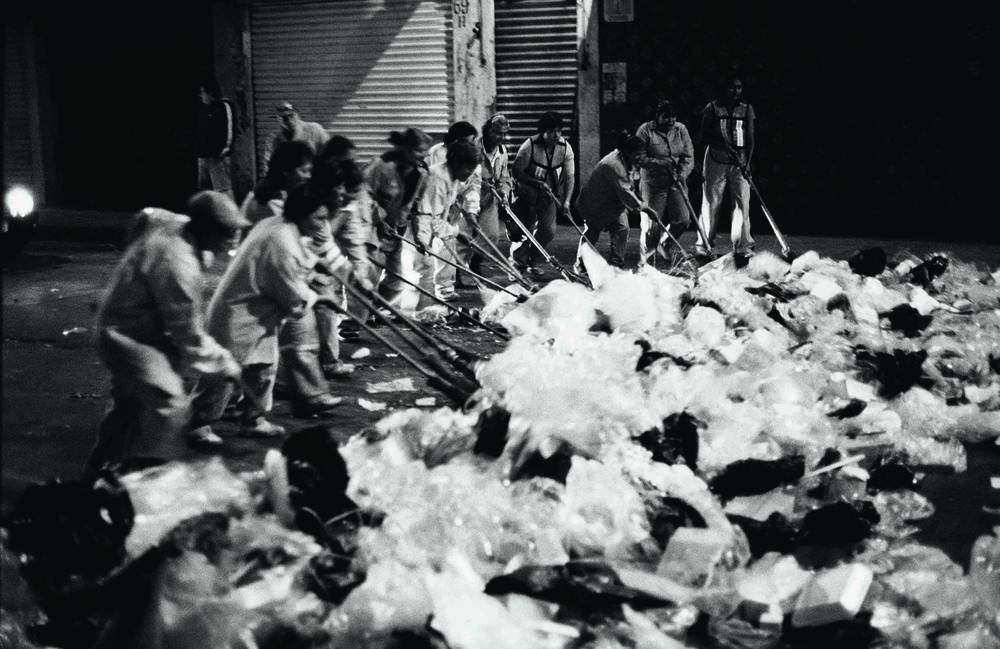
artificial paradises vs. environmental issues
In the search for the new, experiments were done with the materials most recently made available, whether Plexiglas, Styrofoam, silicon, vinyl, or polyurethane as well as industrial manufacturing techniques. In the consumption frenzy of the time, Pop Art celebrated the new artificial and inexpensive material with its colorful brilliance and bright hues, while, with the rapid spread of industrial materials, artists around the Italian Arte Povera, such as Gino Marotta, explored the relationship between nature and artificiality and subverted traditional concepts of a mimetic representation of nature in the second half of the 1960s. Marotta assembled his artificial paradise "Eden Artificiale" (Artificial Eden, 1967–73), a modular and sterile non-nature, from acrylic glass with a playful lightness. The aesthetic strategy of the Arte Povera artist and environmental activist Piero Gilardi, who depicted details of nature with his "Tappeti" (Carpets), is the exact opposite. These works are made from polyurethane foam, seem deceptively real, and can barely be revealed as artificial by the naked eye. With perfect mimicry, Gilardi’s artificial beach "Spiaggia" (1979) or the synthetic jungle "Palmeto" (1987) make reference not least to environmental issues.
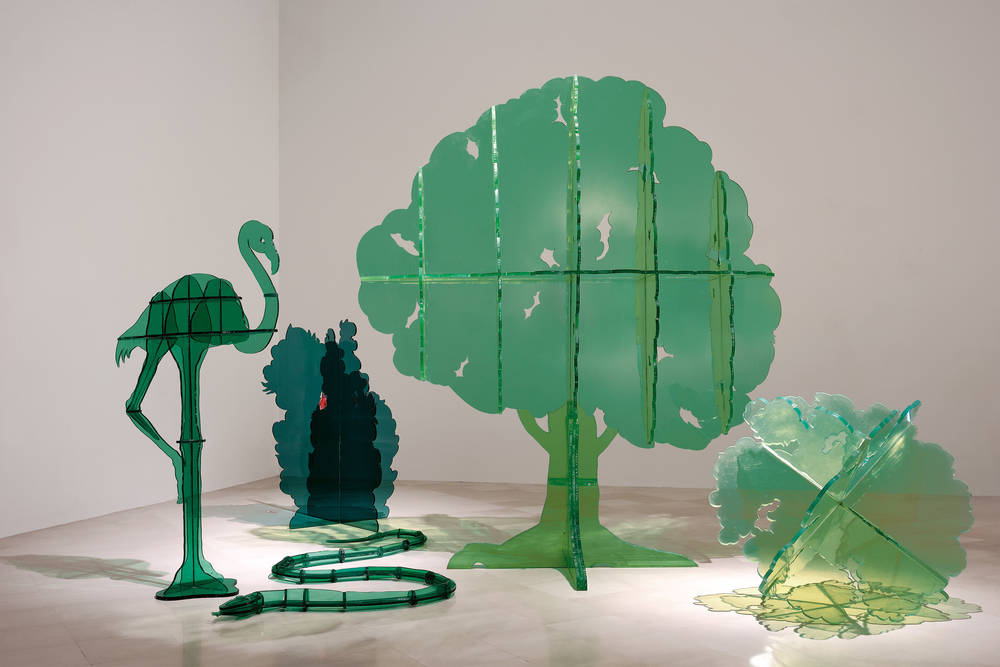
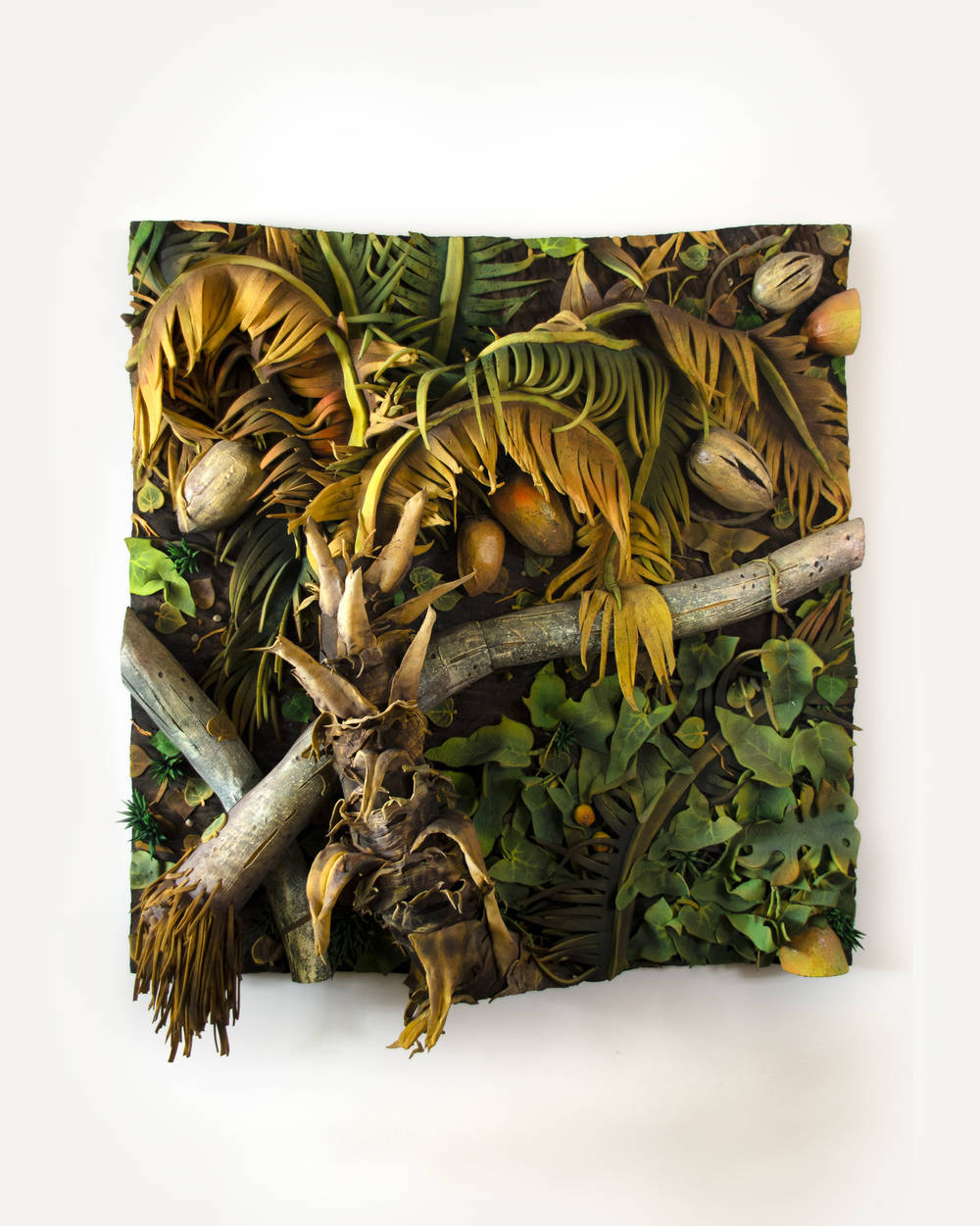
Utopias in the Space Age
Space exploration, aerospace technology, and not least the moon landing itself left behind a deep impression in pop culture, design, and the utopian spirit of the 1960s. The artistic work and experimental architectures of the space age are defined by weightlessness, mobility, flexibility, and, not least, working in a collective. Visionary models such as Archigram’s climate capsule "Air Hab" (1966) deal with the idea rather than its execution. The British group published their associative picture montages with a certain closeness to Pop Art such as "Instant City, Glamour" (1969) starting in 1961 in the magazine Archigram. In Austria Coop Himmelb(l)au and Hans Hollein opened up new approaches to perception and communication with temporary architectures. Hollein’s inflatable "Mobiles Büro" (Mobile Office, 1969), a moveable external plastic
shell, promises a new physical experience in urban space. The US-American Richard Buckminster Fuller, who examined a systematic interaction of technology and social aspects by using new materials, was also pathbreaking with his series of innovative designs and is famous for his geodesic domes.
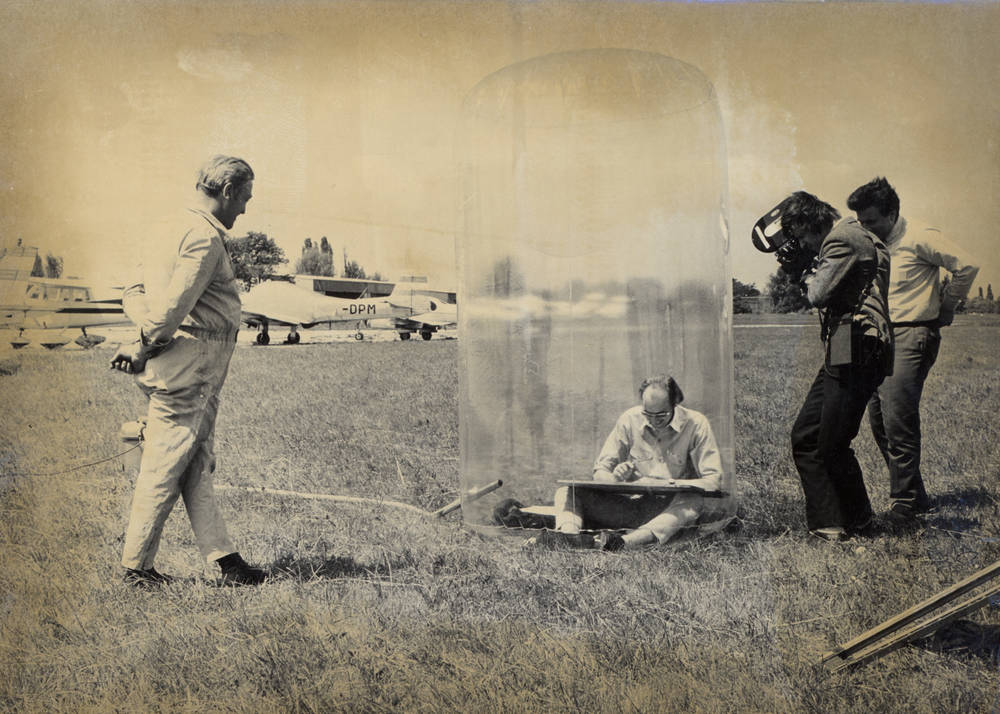
material research and finish fetish
The multifaceted possibilities of form and design of the continuously growing family of plastics inspired a huge pleasure in experimentation in artists starting in the 1960s. The French sculptor César, for example, realized happenings with polyurethane foam, which he allowed to flow across the floor by the barrelful, developing a life of its own. Lynda Benglis worked with latex and polyurethane foam and used the concept of performative pouring in her "Frozen Gestures" group of works, in order to create artworks such as
"Untitled" (1969) based on her body’s interaction with the material. Today, the palette of materials has multiplied. For their creative material research,
the Frankfurt-based artist collective HazMatLab (Sandra Havlicek, Tina Kohlmann, and Katharina Schücke) makes use of unusual substances including synthetic slime, industrial nail polish, and the 3D printing process, as in their sculpture "Coral Cluster" (2021–22)
The striking artificiality, smooth surfaces, and luminous or delicate colorfulness of plastic also inspired so-called Finish Fetish artists like Craig Kauffman in California in the late 1960s. His minimalist objects of translucent and transparent materials evince a nearly sensual quality as a result of their perfect, shiny, and almost wetly-shimmering surfaces. Flawless surfaces also
distinguish the sculptures of Berta Fischer, which, like "Nironimox" (2023), float in space with transparency and lightness. Finally, in his "Technological Reliquaries", the American object artist Paul Thek fascinatingly contrasts the organic texture of an encased piece of rotting meat made of wax with the smoothness of the shrill neon-colored plastic container in which it is enclosed with a seemingly everlasting artificiality
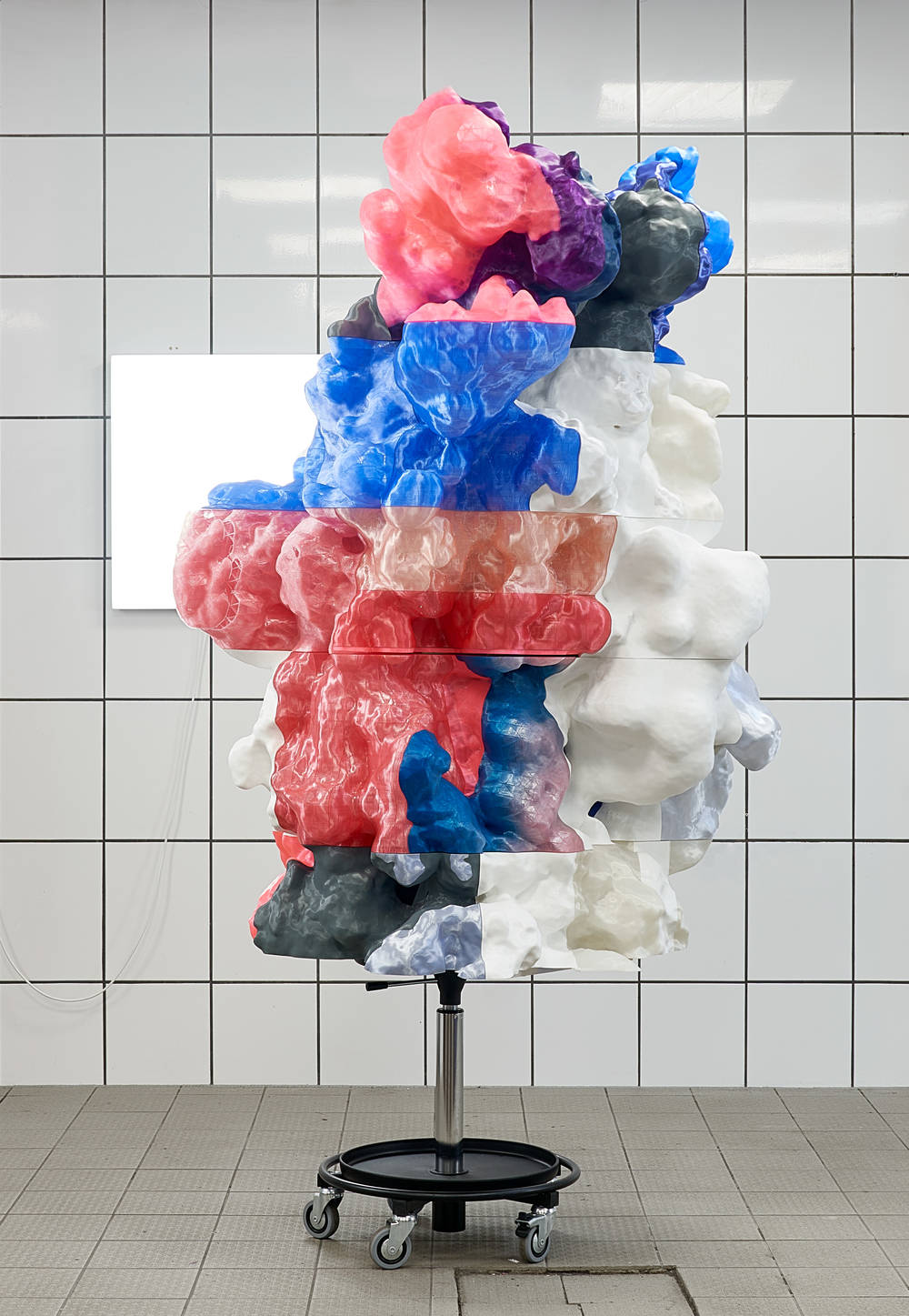
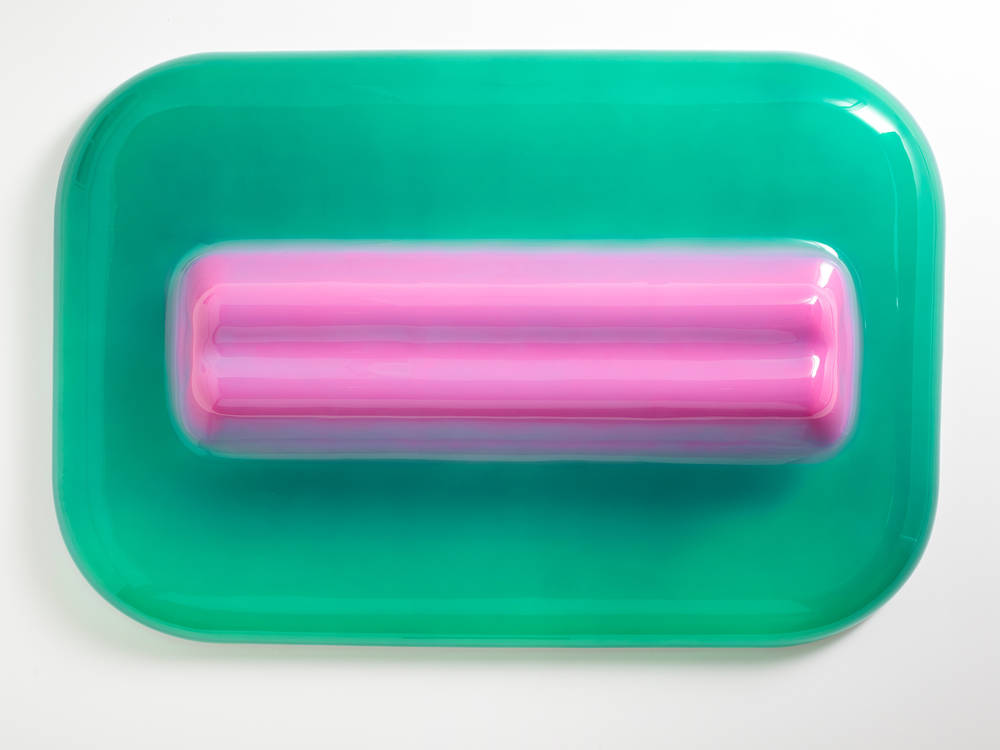
Ecocritical positions of the present
The long-term change in the mentality of society that has taken place with the continuing spread of plastic and its threat to the environment is also reflected in the eco-critical works of a younger generation of artists. In her oeuvre, Monira Al Qadiri addresses the dominance of the oil industry, with which she has been familiar since her childhood in Kuwait. She takes various forms of oil drill heads as the model for her sculptures such as "Orbital 1" (2022), which with their mother-of-pearl-like surfaces seem like majestic crowns and trophies of the Anthropocene. In his most recent work, "Fungi Decomposition" (2023), the Danish artist Tue Greenfort takes a look at a mushroom with the name Pestalotiopsis microspora, which was discovered in the Amazon rainforest and is able to metabolize plastic and transform it into organic material.
Within the framework of the exhibition “Plastic World”, Pınar Yoldaş’s work "An Ecosystem of Excess" (since 2014) is presented at the Senckenberg Naturmuseum Frankfurt. The artist and scientist has been developing a site-specific installation of this work. Oceans — once the origin of evolution and today severely contaminated by plastic — are central to her work. Starting from the Pacific Garbage Patch, she is creating a posthuman ecosystem. It includes “speculative creatures” that metabolize plastics.









